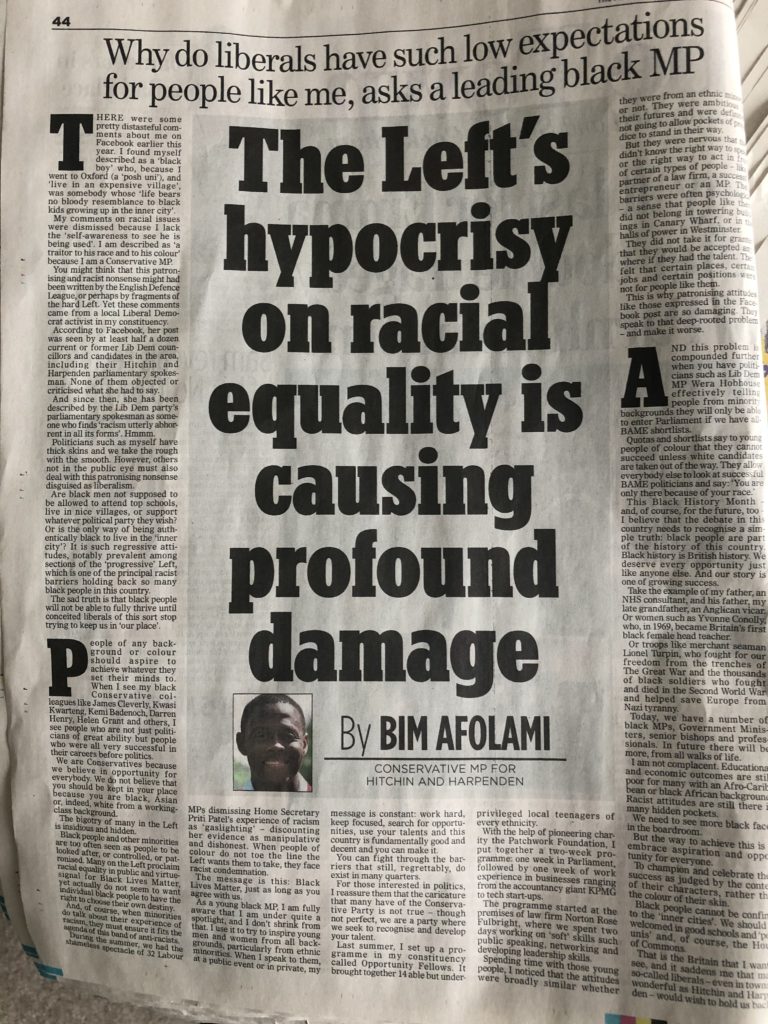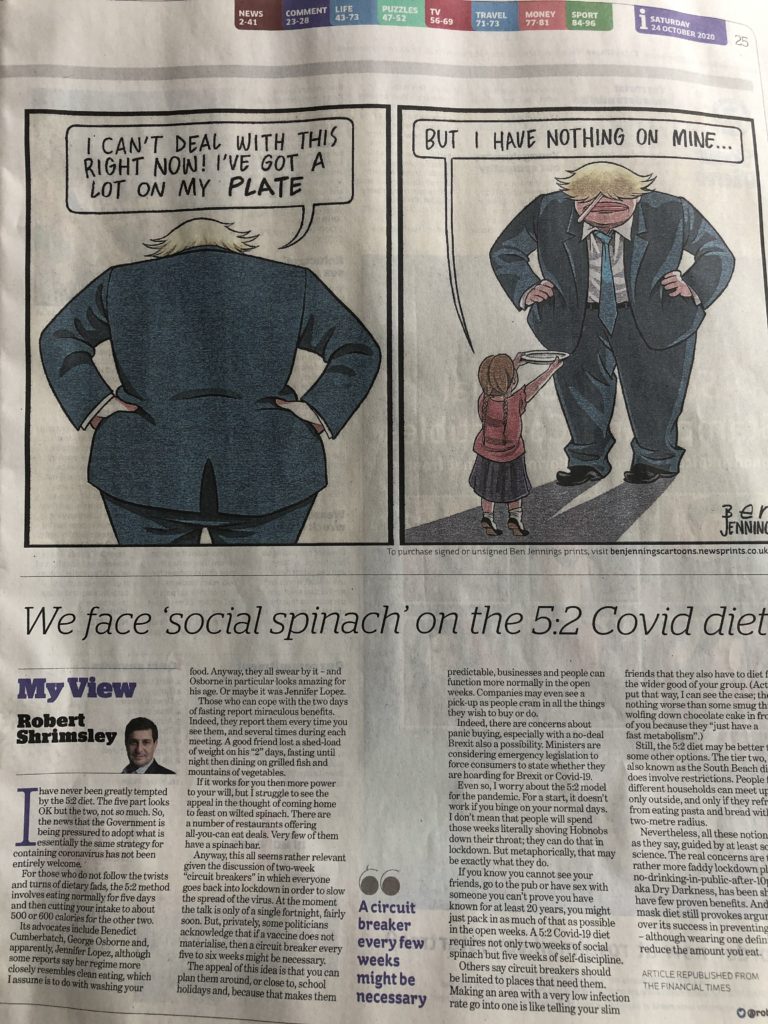THE CSP’S: THE i & THE DAILY MAIL
Intro . . . re-cap on The i . . .
TASK 3: PRODUCE A RESEARCH POST ON THE DAILY MAIL
You will need to be familiar with the Daily Mail newspaper as an institution and have knowledge and understanding the newspaper as a media product in terms of the relevant newspaper industry and audience issues it illustrates. In order to develop this knowledge and understanding, you should consider one complete print edition of the newspaper chosen by your teacher and selected key pages from the newspaper’s website, including the homepage and at least one other page as context for the role of newspapers in the contemporary media landscape.
The Daily Mail is a national daily tabloid newspaper that has historical, social, cultural and political significance. This product offers opportunity for interpretation and in-depth critical analysis and invites close comparison with The i. These two newspapers operate within contrasting political and economic contexts with clear differences in style, address, ideological viewpoint and target audience.
The Daily Mail, launched in 1896 offers many opportunities for studying the relationship between ownership patterns, economic factors and political viewpoints. The history of the Daily Mail provides many examples of the paper’s political influence including some high-profile clashes between the paper and its political opponents.
In the context of declining print sales for all newspapers, the Daily Mail has been relatively successful, particularly by embracing the opportunities of digital technology, adjusting its style to an evolving target readership and by adopting popular campaigns.
Interestingly, in 2017 Wikipedia banned the Daily Mail as ‘unreliable’ source (along with Fox News, Russia Today and others)
Industries issues to be studied include:
- How processes of production, and circulation shape the Daily Mail
- The specialised and institutionalised nature of media production and circulation
- The impact and effects of technological change including digital convergence and the relationship between the print product and Mail Online
- Editorial control by owners and the influence of the editor (the effect of individual producers on media industries)
- The significance of economic factors
- The regulation of the newspaper industry through the Independent Press Standards
- Organisation (IPSO) Post-Leveson debates re Impress, Royal Charter, etc.
Media Audiences
The study of audience in the context of newspapers is of particular importance. The theoretical framework of audience intersects with the study of visual codes and representations which are crucial to analysing the mode of address and techniques of persuasion used to create a consensus for a particular set of beliefs and values. Areas of investigation include:
- Demographics and Psychographics of target audience
- How the Daily Mail reaches, addresses and positions its audience
- How the content of individual news stories attract the audience
- The effect that newspapers such as the Daily Mail have on audiences (media effects theory, reception theory)
- The uses made by audiences of a daily newspaper including aspects of identity and cultural capital
Social, political, economic and cultural contexts
The Daily Mail’s robust right of centre stance (REMEMBER THE POLITICAL COMPASS?) the controversies arising from its campaigns and attitudes and its success in terms of circulation make it a useful case study of the social and cultural contexts of the media, particularly as part of a comparative study alongside the other CSP newspaper. From an economic perspective, it will be useful to consider how print newspapers have responded to declining revenue particularly considering the reach of its associated website.


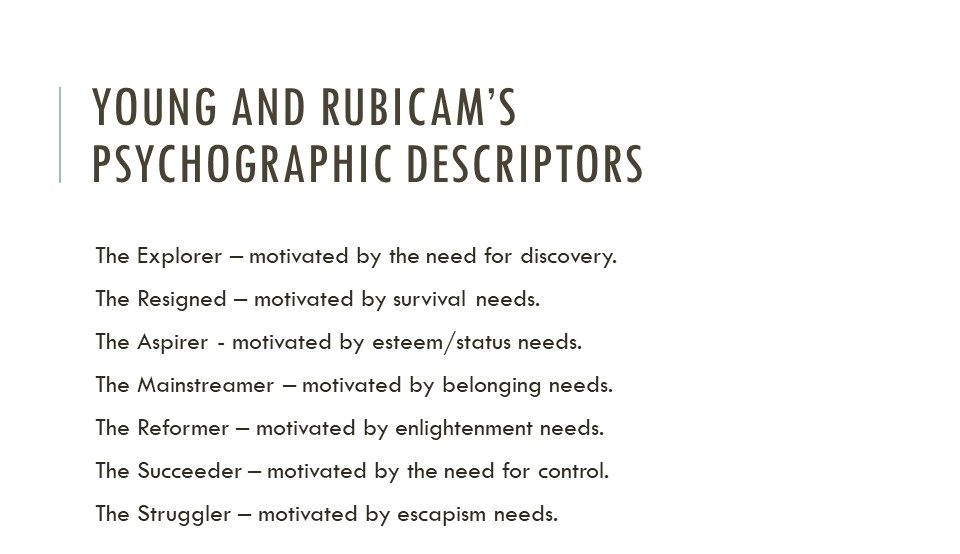
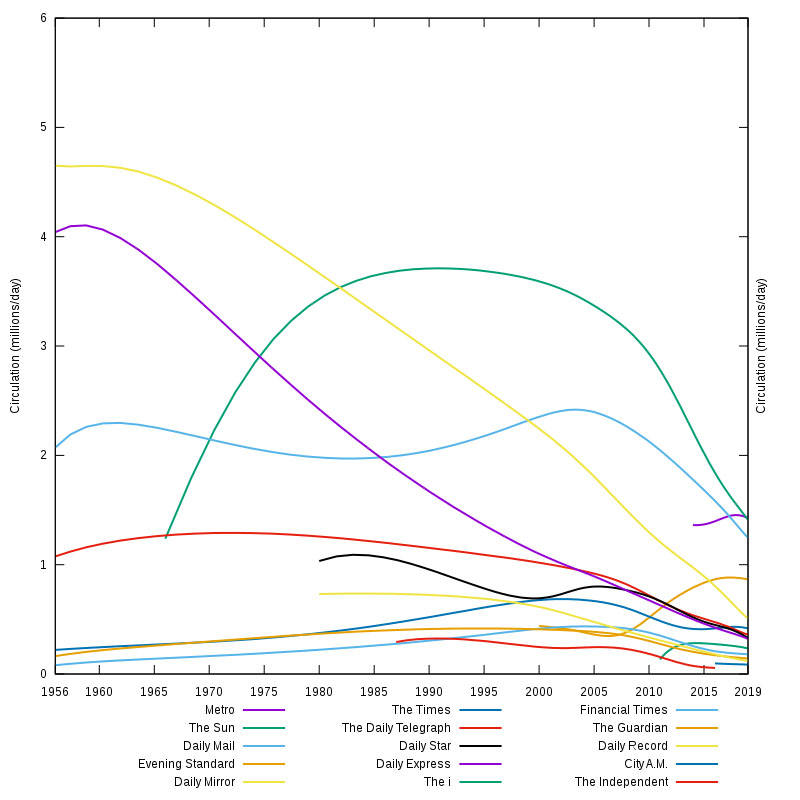
TASK 4: PRODUCE A TABLE THAT COMPARES THE i & THE DAILY MAIL
Divide the table up into similarities and differences. Think conceptually and answer the following 10 questions.
- When they were first introduced – ie do they have a tradition?
- Are they part of a bigger organisational structure?
- Are they known for a particular political perspective?
- What kind of journalism do they produce? What is their USP? What stories do they specialise in?
- What kind of people run the paper? Produce the stories?
- Do they have a similar readership reach?
- Do they have a similar readership profile / target audience?
- How are they currently doing? Increasing or decreasing sales and revenue?
- How are they looking to embrace new media technologies?
- Do they have a similar layout and design?

Re-cap The Political Compass: The ‘Left’ ‘Right’ divide . .
. . .
If news media (and other media forms?) exhibit bias, how can we identify and critically understand it? A good starting point may be to identify our own social-economic-political bias, so take this survey from ‘The Political Compass’ if you wish (link to test).
TASK: Read through the following information about the Political Compass and come up with some words that we can add to our wall display that provide some indication of ‘RIGHT’ and ‘LEFT’ (as well as AUTHORITARIAN AND LIBERTARIAN – if you can)
About the Political Compass
The inadequacies of the traditional left-right line.

If we recognise that this is essentially an economic line it’s fine, as far as it goes. We can show, for example, Stalin, Mao Zedong and Pol Pot, with their commitment to a totally controlled economy, on the hard left. Socialists like Mahatma Gandhi and Robert Mugabe would occupy a less extreme leftist position. Margaret Thatcher would be well over to the right, but further right still would be someone like that ultimate free marketeer, General Pinochet.
That deals with economics, but the social dimension is also important in politics. That’s the one that the mere left-right scale doesn’t adequately address. So we’ve added one, ranging in positions from extreme authoritarian to extreme libertarian.
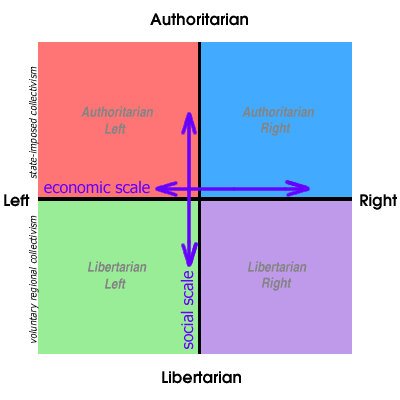
Both an economic dimension and a social dimension are important factors for a proper political analysis. By adding the social dimension you can show that Stalin was an authoritarian leftist (ie the state is more important than the individual) and that Gandhi, believing in the supreme value of each individual, is a liberal leftist. While the former involves state-imposed arbitrary collectivism in the extreme top left, on the extreme bottom left is voluntary collectivism at regional level, with no state involved.
You can also put Pinochet, who was prepared to sanction mass killing for the sake of the free market, on the far right as well as in a hardcore authoritarian position. On the non-socialist side you can distinguish someone like Milton Friedman, who is anti-state for fiscal rather than social reasons, from Hitler, who wanted to make the state stronger, even if he wiped out half of humanity in the process.
The chart also makes clear that, despite popular perceptions, the opposite of fascism is not communism but anarchism (ie liberal socialism), and that the opposite of communism ( ie an entirely state-planned economy) is neo-liberalism (ie extreme deregulated economy)
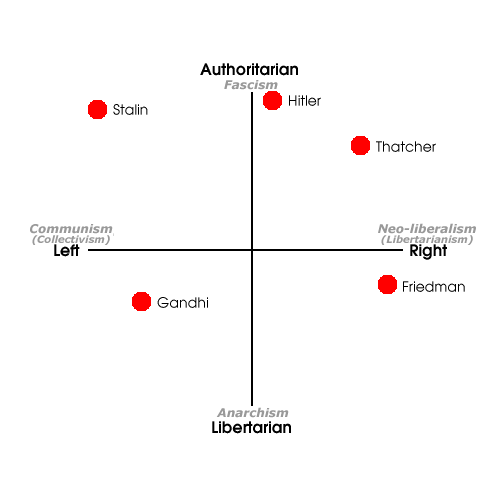
A Word about Neo-cons and Neo-liberals. Or Trump v Biden?
U.S. neo-conservatives, with their commitment to high military spending and the global assertion of national values, tend to be more authoritarian than hard right. The “free market”, in neo-conservative parlance, also allows for the large-scale subsidy of the military-industrial complex, a considerable degree of corporate welfare, and protectionism when deemed in the national interest. These are viewed by neo-liberals as impediments to the unfettered market forces that they champion. By contrast, neo-liberals, oppose the ensuing demands on the tax payer and belong to a further right but less authoritarian region.

Finding illustrations from the CSP’s
TASK: Now go through the examples from the Daily Mail and The i and find examples of ‘Right’ ‘Left’, ‘Authoritarian’, ‘Libertarian’.
Pin them up to our wall display.
